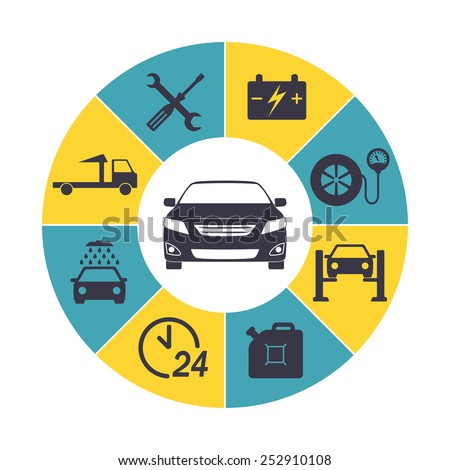Understanding Your Auto'S Warning Lighting: What Do They Actually Mean?
Understanding Your Auto'S Warning Lighting: What Do They Actually Mean?
Blog Article
Material Written By-Boye Shepherd
When you lag the wheel, those radiant caution lights on your control panel can be a little bit complicated. Do you understand what they're trying to inform you regarding your automobile's health and wellness? Understanding the significance of these lights is essential for your security and the durability of your car. So, the next time one of those lights turns up, would not you want to analyze its message accurately and take the necessary actions to resolve it?
Common Caution Lighting and Interpretations
Determine common caution lights in your auto and understand their definitions to ensure safe driving.
One of the most common warning lights include the check engine light, which signifies concerns with the engine or discharges system. If this light comes on, it's vital to have your car checked quickly.
The oil pressure alerting light shows low oil pressure, requiring prompt interest to avoid engine damages.
A flashing battery light could recommend a defective charging system, potentially leaving you stranded otherwise addressed.
straight from the source tracking system (TPMS) light alerts you to reduced tire stress, influencing vehicle stability and gas performance. Overlooking this might lead to unsafe driving problems.
The abdominal muscle light suggests an issue with the anti-lock stopping system, jeopardizing your ability to stop quickly in emergency situations.
Lastly, the coolant temperature level alerting light warns of engine getting too hot, which can result in serious damage if not solved swiftly.
Understanding these typical warning lights will certainly aid you attend to problems quickly and keep risk-free driving problems.
Value of Prompt Interest
Comprehending the common caution lights in your automobile is just the primary step; the importance of immediately attending to these cautions can not be highlighted sufficient to ensure your security on the road.
When a warning light brightens on your control panel, it's your automobile's means of connecting a prospective problem that requires focus. Disregarding these warnings can result in more extreme issues down the road, endangering your safety and possibly costing you more in repairs.
https://freeecutuningsoftware39516.luwebs.com/31830571/disclosing-the-essentials-of-a-five-star-auto-service-center-experience to cautioning lights can stop break downs and mishaps. As an example, a flashing check engine light might suggest a misfire that, if left neglected, can trigger damage to the catalytic converter. Resolving this quickly can conserve you from an expensive fixing.
In a similar way, a brake system warning light may indicate reduced brake fluid or used brake pads, crucial elements for your safety and security when driving.
Do It Yourself Troubleshooting Tips
If you observe a warning light on your dashboard, there are a few DIY repairing pointers you can attempt before looking for expert assistance.
The initial step is to consult your vehicle's guidebook to understand what the details caution light suggests. In some cases the concern can be as simple as a loose gas cap setting off the check engine light. Tightening up the gas cap may deal with the trouble.
An additional typical problem is a low battery, which can set off various advising lights. Checking the battery connections for deterioration and guaranteeing they're secure may fix the trouble.
If a caution light lingers, you can attempt resetting it by disconnecting the automobile's battery for a few mins and afterwards reconnecting it. Additionally, inspecting your vehicle's fluid levels, such as oil, coolant, and brake fluid, can assist repair cautioning lights related to these systems.
Conclusion
In conclusion, understanding your cars and truck's warning lights is vital for keeping your car running smoothly and safely. By promptly attending to these informs and understanding what they imply, you can avoid costly fixings and potential malfunctions.
Keep in mind to consult your cars and truck's manual for certain information on each alerting light and act accordingly to make certain a hassle-free driving experience.
Stay notified, stay secure when driving!
